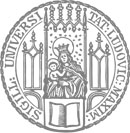Research
Current Research Projects
- "Buddhist Manuscripts from Gandhāra"
The discovery of the earliest Buddhist manuscripts – written in Gāndhārī language and Kharoṣṭhī script and dating from the 1st c. BCE to the 4th c. CE – has revolutionized our understanding of this formative phase of Buddhism. On the way from India through Gandhāra to Central Asia and China, Buddhism turned into a world religion, and Gandhāra played a central role in the development of Buddhist scholasticism, Mahāyāna Buddhism and Buddhist art. The project ‘Early Buddhist manuscripts from Gandhāra: religious literature at the interface of India, Central Asia and China’ completes the edition of all known Gāndhārī manuscripts, contributes to the compilation of the Dictionary of Gāndhārī, and prepares a comprehensive Historical Grammar of Gāndhārī, Paleography of Kharoṣṭhī, and History of Gandhāran Literature and of Buddhism in Gandhāra. It collaborates with the Early Buddhist Manuscripts Project (University of Washington) in the study of the British Library collection of Gāndhārī scrolls and continues the work of the DFG project ‘The Bajaur collection of Buddhist Kharoṣṭhī manuscripts’ (Freie Universität Berlin, 2005–12). Funding is provided by the Union of the German Academies of Sciences and Humanities under the auspices of the Bavarian Academy of Sciences and Humanities.
See more: https://www.en.gandhara.indologie.uni-muenchen.de/index.html
- ERC Advanced Grant-project 'BEST' "Buddhism's Early Spread to Tibet: Dunhuang and the Influence of Sinitic Scriptures", led by Prof. Dr. Jonathan Silk
Modern scholarship follows emic accounts in situating the origins of Tibetan Buddhism squarely in India, tacitly accepting Tibet’s claim to be heir to the orthodox tradition. This oversimplifies the complex history of Buddhism’s two transmissions to Tibet, in the 7th and 11th centuries, eliding the formative early contributions of Sinitic sources, principally imparted from the Silk Road oasis of Dunhuang, a crucial locus of interaction between Tibetan and Chinese cultures in the 8th-11th centuries. Manuscripts preserved in the Dunhuang caves evidence this Sino-Tibetan nexus in native compositions and translations from Chinese into Tibetan. Efforts to trace Chinese and Sino-Tibetan influences on the formation of Tibetan Buddhism have been largely impressionistic, but state-of-the-art tools such as Handwritten Text Recognition to digitize manuscripts allow their systematic analysis, and others permit us to identify “fingerprints” of Tibetan translations from Chinese. BEST will locate scriptures and other materials of Sinitic origin, and trace their impact on Tibetan Buddhism. Starting with an examination of the reasons for the prominence of Dunhuang, we will uncover the conditions permitting the site to become such a multicultural center, cradle to a high level of Buddhist scholarship. Identifying Sinitic sources introduced into Tibet in the early period, we will probe their later importance, challenging the tradition's polemical historiography which represses such recognition. We will produce studies of individual Tibetan translations from Chinese, linguistic studies of the Chinese-Tibetan lexical interface, studies on the most prominent Dunhuang monk-translator, Chos grub, investigations of later Tibetan historiographical works, and a database of Tibetan Dunhuang manuscripts, all contributing to a fundamental revaluation of formative influences on early Tibetan Buddhism.
See more: https://www.en.indologie.uni-muenchen.de/forschung/erc-best/index.html
- DFG-project "The Early Lost Legal Commentaries of the Mahāvihāra Tradition", by Dr. Aruna Gamage
The aim of this project is to recover lost early legal exegeses of one of the oldest continuously surviving legal traditions in the world, namely the Buddhist monastic law (Vinaya) of the Theravāda tradition (Mahāvihāra school), which is still alive today and whose origins date back to around the 3rd century BCE.
The aim of this study is to catalogue, edit and translate quotations from early, now lost commentaries (ca. 1st century BC to ca. 3rd century AD) on the Vinaya contained in a later legal text (4th/5th century). Based on this catalogue, a careful analysis of the exegeses that emerge from these quotations and their classification in the development of Buddhist law will be undertaken. The study will thus make an important contribution to the history of Buddhist law, particularly to the history of Buddhist monasticism and the history of Buddhist legal interpretation, and will make these relevant materials systematically accessible for the first time.
Although there are numerous Buddhist monastic traditions, each transmitting its own corpus of authoritative texts, the so-called Threefold Basket (Pāli Tipiṭaka, Sanskrit Tripiṭaka), regarded as the ‘Word of the Buddha’, the Theravāda tradition—still thriving today in South and Southeast Asia—is the only one whose canon has been preserved in an Indian language, namely the Middle Indic language Pāli. This canon represents the Mahāvihāra school’s tradition, while the texts of other subgroups of the Theravāda tradition have not survived.
The monastic law (Vinaya) constitutes the first part of the canon. It contains, among other things, the rules for monks and nuns traditionally attributed to the Buddha, which remain valid for monks and nuns today. Over the millennia of their application, societal changes have necessitated the explanation of some of these rules in light of social developments. As a result, numerous commentaries and subcommentaries on the Buddhist law of the Theravāda tradition have been written over the past 2,000 years, with twenty of these commentaries being fully preserved.
The Vinaya commentary Samantapāsādikā (= Sp), written between the 4th and 5th centuries CE, is crucial for the study of earlier interpretations, as the author relies on earlier, now lost commentaries (circa 1st century BCE to 1st century CE), from which he frequently quotes. These lost commentaries are: 1) Mahā-Aṭṭhakathā (50 quotations), 2) Kurundī-Aṭṭhakathā (108 quotations), 3) Mahāpaccarī-Aṭṭhakathā (133 citations), 4) Saṅkhepa-Aṭṭhakathā (12 citations), and 5) Andhaka-Aṭṭhakathā (19 citations). The aim of this project is to compile a complete catalogue of the 303 citations from the first four of these commentaries (the fifth has already been the subject of another study). Through a detailed analysis of the individual quotations, the varying orientations of these commentaries will be identified and explored. By drawing on the three most important sub-commentaries on the Vinaya—Vajirabuddhiṭīkā (Vjb, 10th century CE), Sāratthadīpanīṭīkā (Sp-ṭ, 12th century CE), and Vimativinodanīṭīkā (Vmv, circa 12th-13th century CE)—it will also be possible to trace the survival of these early traditions in later centuries.



